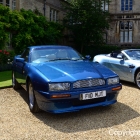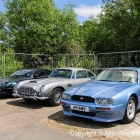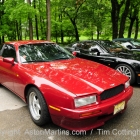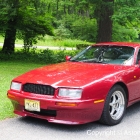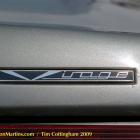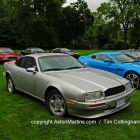Still displacing 5,340cc, the engine was certified for all markets so even the US car produced 330 bhp @ 5300rpm and torque of 350lb/ft @ 4000rpm, a significant improvement against the 250bhp as seen in federal AMV8’s throughout most of the 1980s. Before production of the Virage ended, AML revised published power and torque down to 310bhp and 340 lb/ft which I suspect was due tighter emission controls being introduced.
As with many Aston Martins throughout history, certain parts are borrowed from other cars. For instance, the rear light clusters are from the VW Scirocco; headlamps courtesy of the Audi 100. Whilst some might say that this a bad thing, but without these small but expensive to manufacture parts, there would be no Aston Martin today. What must be remembered was that the body panels were individually hand made especially for the specific car and the engine was assembled by just one man who will have spent a whole working week on it alone.
The Virage name was briefly revived for 2012 Model Year with the DB9 derived, V12 powered Virage, a GT that sat between the DB9 and the DBS. Other than a name, the 2012 cars shared nothing with the original Virage.
Production of the Virage Coupe continued until 1994; a year or so later, the car was replaced in the range by the V8 Coupe.








